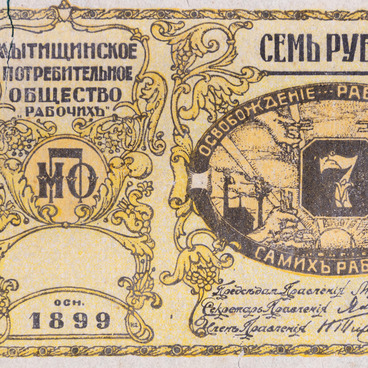In the 19th—early 20th century, most buildings in Russia were wooden, so they were often destroyed in fire which resulted in losses. Naturally, people did their best to prevent fires and insured their houses. As a result, the first insurance agencies appeared. Fire insurance was the leading type of insurance in terms of demand.
Starting from 1820s, new types of insurances companies were created in Russia, for example, state-funded, joint-stock, zemstvo-based (administrative unit), and mutual. Since fires were frequent in Russian provinces, the insurance sector grew quickly. The overwhelming commercial success of the first insurance agency inspired a few government officials to present a new initiative. In 1834, the Head of His Imperial Majesty’s Office count Alexander von Benckendorf suggested to start a new fire insurance company that would provides services in the 40 governorates not covered by the first agency. In 1835, the Emperor signed the decree to create the Second Russian Fire Insurance Society. By the late 19th century, insurance companies became an indispensable part of the Russian economy, and several types of insurance companies already existed.
Zemstvo insurance was divided into three groups: fixed-rate, supplementary, and voluntary. After signing a contract, the insurance society gave the insured party a plaque they could hang on their house. One of such plaques is presented at the exhibition. Plaques were divided into medium and large, depending on the size of insured property. They were almost the same shape, colors, and text, and only slightly differed in size and purpose. Paragraph 35 of the Charter of the Second Russian Fire Insurance Society stated that both real estate and personal property was subject to insurance, for example: houses, factories and plants of all kinds, furniture, household appliances, fancy articles, clothing, all kinds of machinery, goods in houses, shops, barns, on ships, and stored separately. However, they did not insure contracts, liabilities, documents, promissory notes and all kinds of loans, gold and silver in bars and coins, paper money and other public bonds, precious stones, medals, antiques, paintings, gunpowder, and flammable materials. Each insured party received an insurance policy that contained liabilities of both parties. One of the directors signed it and a manager of the Society put a stamp on it. It was not allowed to give the policy to third parties without prior agreement of the Society.
Large plaques were about 25 centimeters high and were hanged in clearly visible but hard-to-reach spots on facades. plaques were up to 12 centimeters high and were placed near or on the door of the insured apartment.
For small personal property tiny plaques about 6 to 7 cm long were used. However, they did not become popular. In some cases, one insurance company could produce plaques of different shapes, design, and color scheme. Most of them were oval or rectangular but there were also round, square, diamond-shaped, hexagonal, and octagonal ones.
Starting from 1820s, new types of insurances companies were created in Russia, for example, state-funded, joint-stock, zemstvo-based (administrative unit), and mutual. Since fires were frequent in Russian provinces, the insurance sector grew quickly. The overwhelming commercial success of the first insurance agency inspired a few government officials to present a new initiative. In 1834, the Head of His Imperial Majesty’s Office count Alexander von Benckendorf suggested to start a new fire insurance company that would provides services in the 40 governorates not covered by the first agency. In 1835, the Emperor signed the decree to create the Second Russian Fire Insurance Society. By the late 19th century, insurance companies became an indispensable part of the Russian economy, and several types of insurance companies already existed.
Zemstvo insurance was divided into three groups: fixed-rate, supplementary, and voluntary. After signing a contract, the insurance society gave the insured party a plaque they could hang on their house. One of such plaques is presented at the exhibition. Plaques were divided into medium and large, depending on the size of insured property. They were almost the same shape, colors, and text, and only slightly differed in size and purpose. Paragraph 35 of the Charter of the Second Russian Fire Insurance Society stated that both real estate and personal property was subject to insurance, for example: houses, factories and plants of all kinds, furniture, household appliances, fancy articles, clothing, all kinds of machinery, goods in houses, shops, barns, on ships, and stored separately. However, they did not insure contracts, liabilities, documents, promissory notes and all kinds of loans, gold and silver in bars and coins, paper money and other public bonds, precious stones, medals, antiques, paintings, gunpowder, and flammable materials. Each insured party received an insurance policy that contained liabilities of both parties. One of the directors signed it and a manager of the Society put a stamp on it. It was not allowed to give the policy to third parties without prior agreement of the Society.
Large plaques were about 25 centimeters high and were hanged in clearly visible but hard-to-reach spots on facades. plaques were up to 12 centimeters high and were placed near or on the door of the insured apartment.
For small personal property tiny plaques about 6 to 7 cm long were used. However, they did not become popular. In some cases, one insurance company could produce plaques of different shapes, design, and color scheme. Most of them were oval or rectangular but there were also round, square, diamond-shaped, hexagonal, and octagonal ones.


